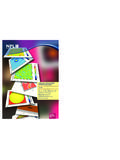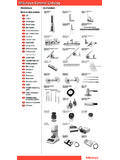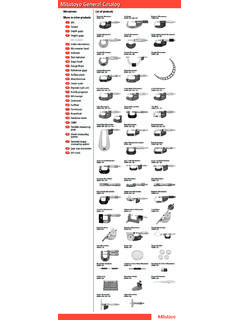Transcription of Good Practice Guide No. 42 - NPL Publications Database: …
1 good Practice Guide No. 42 cmm VerificationDavid FlackIssue 2 Measurement good Practice Guide No. 42 cmm Verification David Flack Engineering Measurement Division National Physical Laboratory ABSTRACT This Guide covers performance assessment of CMM accuracy , use of everyday artefacts for regular CMM checking, methods of monitoring machine performance between formal verification intervals and traceability. It is an update of a Guide first published in 2001. Queen's Printer and controller of HMSO July 2001 Updated July 2011 ISSN 1368-6550 National Physical Laboratory Hampton Road, Teddington, Middlesex, TW11 0LW Acknowledgements The author would like to thank Alan Hatcher (formerly Mitutoyo Ltd) for supplying much of the information given in this Guide and Keith Bevan (formerly Mitutoyo Ltd), Mike Crossman and John Cubis (UKAS) for providing useful technical input.
2 Thanks also to Dr G N Peggs (formerly NPL) and Dr R Angus (NPL) and all lead users who reviewed the various drafts and last but not least the Department of Trade and Industry (DTI) for funding production of this Guide as part of the 1999-2002 Length Programme (Project MPU 8 ). The BIS 2008-2011 Engineering Measurement Programme funded the current revision. Contents Introduction .. 1 What this Guide is about and what it is not .. 2 Introduction to ISO 10360 and this Guide .. 2 Co-ordinate measuring machines .. 2 Structure of ISO 10360 .. 3 Note on optical CMMs .. 3 Non-Cartesian CMMs.
3 4 Sources of CMM Error .. 5 An introduction to CMM error sources .. 6 ISO 10360 and CMM errors .. 7 ISO 10360-2: 2009 CMMs used for measuring linear dimensions .. 9 Objectives of ISO 10360-2 .. 10 An overview of ISO 10 What s new in ISO 10360 .. 11 CMM test uncertainty .. 11 Limitations of ISO 10360 .. 12 Basic terminology .. 13 Material standard of size .. 14 Length measurement error of a CMM .. 15 Maximum permissible error of indication of a CMM for size measurement .. 16 Ram axis stylus tip offset .. 17 Symbols used in ISO 10360 .. 18 The acceptance test .. 21 Preliminary actions .. 22 Environmental conditions.
4 22 Operating 23 Workpiece loading effects .. 23 Checking the probing system prior to the ISO 10360-2 test .. 23 Choice of measuring equipment .. 24 Alternative artefacts .. 25 Laser interferometry with contact probing measured in a bi-directional manner26 Ball bars or ball plates measured in a bi-directional manner .. 26 Length measurement error with ram axis stylus tip offset of zero, E0 .. 27 Calculation of results .. 29 Length measurement error with ram axis stylus tip offset of 150 mm, E150 .. 33 Repeatability range of the length measurement error .. 33 Interpretation of the results .. 33 Acceptance test.
5 33 Data rejection and repeated measurements .. 34 Reverification test .. 34 Acceptance test of the CMM probing system .. 35 Acceptance test of the CMM probing system .. 36 Probing error PFTU, MPE .. 36 Acceptance test procedure .. 37 Calculation of results .. 38 Interpretation of 39 Uncertainties .. 41 Uncertainty of measurement .. 42 Co-ordinate measuring machine test uncertainty .. 42 Periodic reverification .. 45 Length measurement error .. 46 Single stylus probing error .. 46 Interim check of the 47 Use of a purpose made test piece .. 48 Use of a ball-ended bar .. 50 A bar that can be kinematically located between a fixed reference sphere and the sphere of the CMM probe stylus.
6 52 A circular reference object (for example a ring gauge) .. 54 Interim checks using a ball plate .. 55 Interim checks using a hole plate .. 56 Interim checks and the comparison to specifications .. 57 Interim probe check .. 57 Improving measurement confidence .. 59 Similarity conditions .. 60 An example using a calibrated workpiece .. 61 CMMs using multiple stylus probing systems .. 63 Fixed multi-probe and multi-stylus probing systems .. 64 Articulating probing systems .. 64 Assessment and reverification tests for CMMs with the axis of a rotary table as the fourth axis .. 67 Requirements for rotary tables.
7 68 Error of indication .. 68 Environmental conditions .. 68 Stylus system .. 68 Operating conditions .. 69 Acceptance and reverification tests .. 69 Principles .. 69 Measuring equipment .. 69 Set up and procedure .. 69 Results .. 72 Compliance with specifications .. 72 Verification of large CMMs .. 73 Artefacts for verification of large CMMs .. 74 Use of laser 74 Summary .. 77 Glossary of terms .. 79 Glossary of terms .. 80 Health and 83 Mechanical hazards .. 84 Hazards associated with laser illumination .. 84 Chemical 84 Appendices .. 85 Appendix A Links to other useful sources of information.
8 86 National and International Organisations .. 86 National Physical Laboratory .. 86 National Institute of Standards and Technology (NIST) .. 87 EURAMET .. 87 Institute for Geometrical Product Specification .. 88 Networks .. 88 Measurement Network Engineering and Optical .. 88 Software Support for Metrology Programme (SSfM) .. 88 National and International Standards .. 89 British Standards Institution (BSI) .. 89 International Organisation for Standardization (ISO) .. 89 Traceability .. 90 Training courses .. 92 Dimensional measurement Training: Level 1 Measurement User.
9 93 Dimensional Measurement Training: Level 2 - Measurement Applier94 Manufacturers .. 95 Saphirwerk Industrieprodukte AG .. 97 Appendix B ISO 14253 decision rules .. 98 Summary of ISO 14253 .. 101 List of Figures Figure 1 A step gauge being used to verify a CMM .. 14 Figure 2 Gauge blocks and end bars .. 15 Figure 3 CMM maximum permissible error of indication .. 16 Figure 4 CMM maximum permissible error of indication .. 17 Figure 5 CMM maximum permissible error of indication .. 17 Figure 6 An example of a ram axis stylus tip offset .. 18 Figure 7 An ISO 10360-2 test being carried out using gauge blocks.
10 24 Figure 8 A laser interferometer being used to verify a CMM .. 26 Figure 9 Example measuring lines .. 28 Figure 10 Example position and orientation of gauge blocks .. 29 Figure 11 Graphical representation of ISO 10360 test .. 32 Figure 12 Reference sphere should not be used .. 36 Figure 13 Use a suitable test sphere .. 36 Figure 14 Recommended probing pattern (a indicates the pole) .. 38 Figure 15 Example results from a probe test .. 40 Figure 16 An example output from the CMM software .. 40 Figure 17 A purpose made test piece with interchangeable top plate .. 49 Figure 18 Top plate with cylindrical artefacts.













